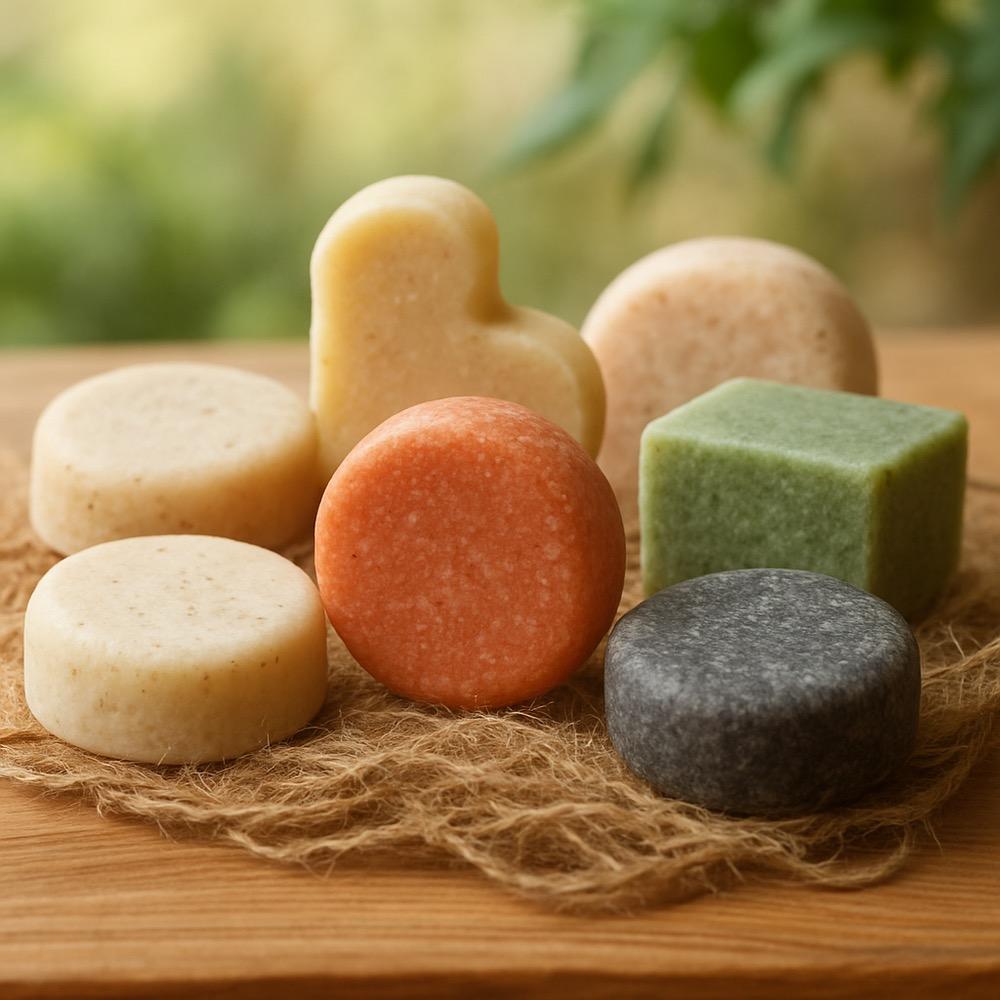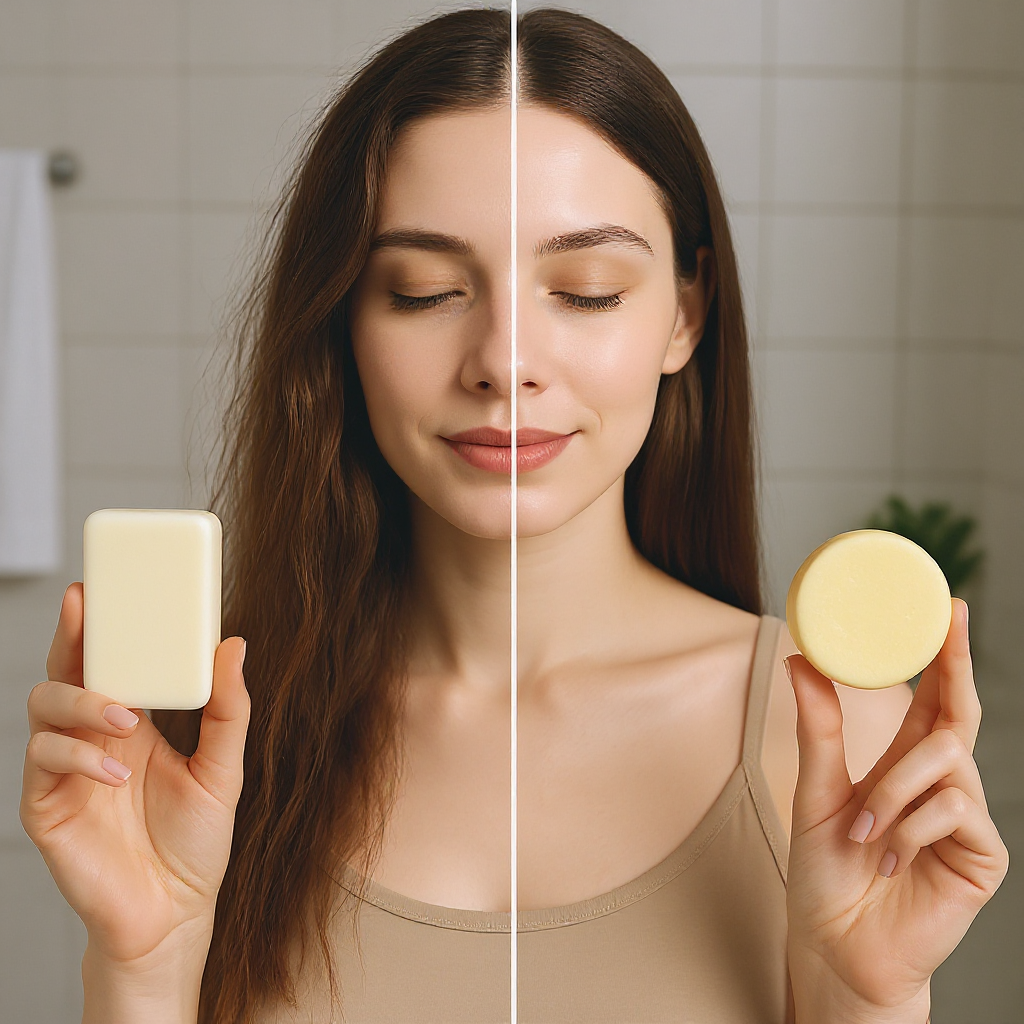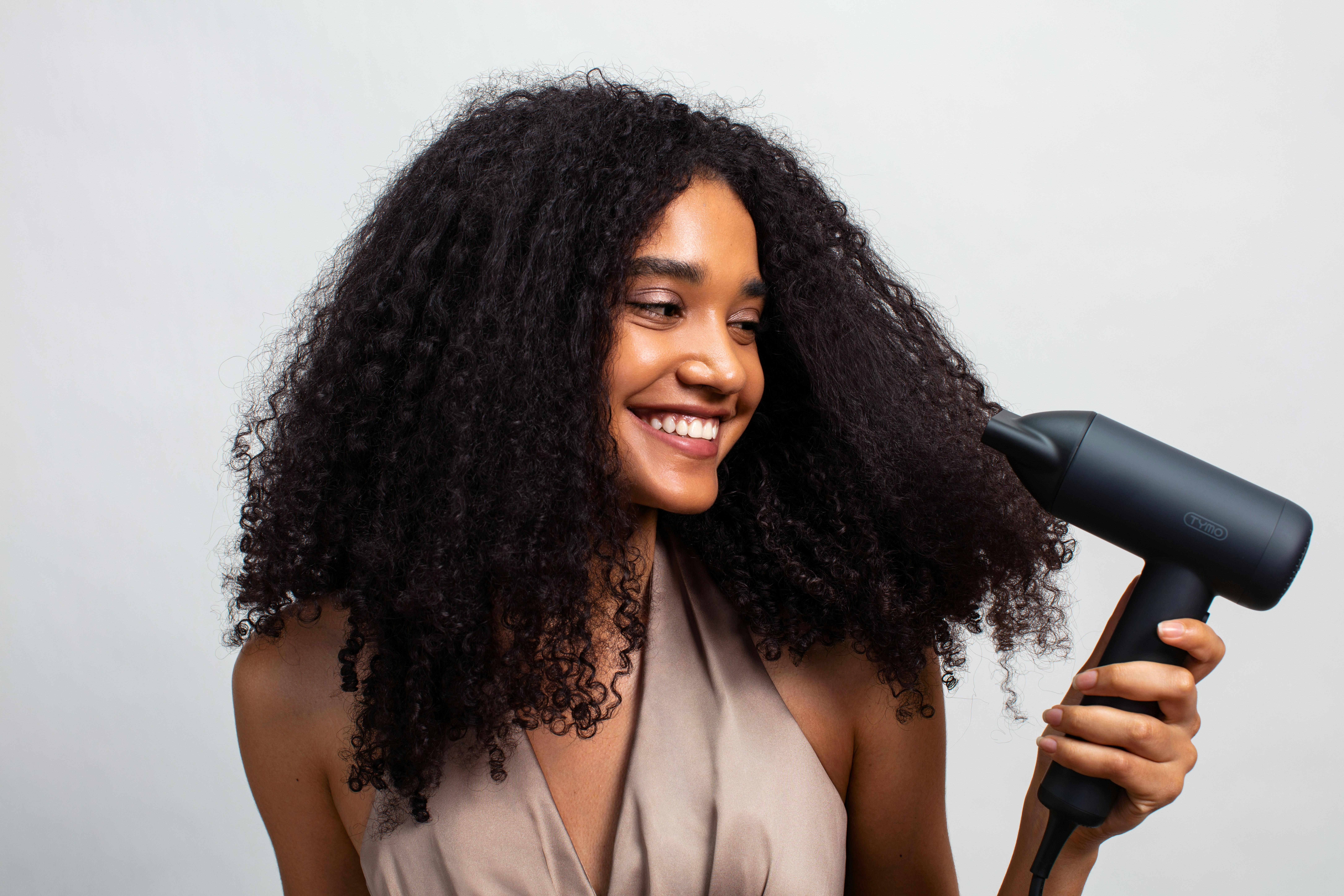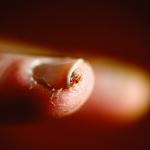Many have asked, and more are still asking the difference and consequences of using a regular soap vs shampoo on hair. Due to number of process, also it could save money, right? Sadly, using soaps to shampoo your hair isn’t something we would recommend, for a variety of reasons. Read to the end as to understand the differences between these two products, formulated with different purposes.
We've all been there - standing in the shower, reaching for the shampoo, only to find the bottle empty. A quick glance around and the bar of soap seems like a viable alternative. But is it? While the immediate answer might be a simple 'yes, you can wash your hair with regular soap,' the more nuanced and important question is: 'should you?'
This blog post will delve into the fascinating world of hair care, exploring the fundamental differences between traditional soaps and shampoos, the potential consequences of using the wrong product on your precious locks, and introduce you to a growing trend that offers a compelling alternative: the humble, yet mighty, shampoo bar.
Get ready as we unravel the mysteries of hair cleansing and discover how to keep your hair healthy, vibrant, and happy.
Let’s dive in!
The Fundamental Differences: Soap vs. Shampoo
To truly understand why using regular soap on your hair isn't ideal for long-term hair health, we need to examine the core differences in their formulation and purpose. While both are designed for cleansing, their chemical compositions and intended targets set them worlds apart.
pH Levels: The Unsung Hero of Hair Health
One of the most critical distinctions lies in their pH levels. Our hair and scalp naturally maintain a slightly acidic pH, typically ranging from 4.5 to 5.5. This acidic mantle is crucial for keeping the hair cuticle flat and smooth, which in turn contributes to shine, reduces frizz, and protects the hair shaft from damage. It also helps to keep the scalp's microbiome balanced, preventing issues like dryness, itchiness, and bacterial overgrowth.
- Traditional Soap: Most traditional bar soaps are inherently alkaline, with a pH often ranging from 9 to 10. This high alkalinity is effective for dissolving grease and grime on the skin, but it can be detrimental to hair. When exposed to such a high pH, the hair cuticle – the outermost protective layer of the hair shaft - can lift and open. This leads to several undesirable effects, including:
- Rough Texture: The raised cuticles make the hair feel rough, coarse, and tangled.
- Dullness: Light doesn't reflect as well off a rough surface, resulting in a lack of shine.
- Increased Porosity: An open cuticle makes the hair more porous, meaning it absorbs and loses moisture more easily, leading to dryness and brittleness.
- Color Fading: For color-treated hair, an open cuticle allows dye molecules to escape more readily, leading to premature fading.
- Shampoo: In contrast, shampoos are specifically formulated to be pH-balanced, meaning their pH is much closer to that of our hair and scalp. This helps to maintain the integrity of the hair cuticle, keeping it smooth and closed. Modern shampoos also contain a complex blend of ingredients beyond just cleansing agents, including:
- Surfactants: These are the cleansing agents, but in shampoos, they are typically milder than those found in traditional soaps, designed to clean effectively without stripping natural oils excessively.
- Conditioning Agents: Ingredients like silicones, fatty alcohols, and natural oils help to moisturize, detangle, and add shine to the hair.
- Humectants: These attract and retain moisture in the hair.
- Proteins: Some shampoos include proteins to strengthen the hair shaft.
- Preservatives, Fragrances, and Colorants: These are added for product stability, sensory experience, and aesthetic appeal.
Lather and Residue: The Visible Differences
Another noticeable difference is the way they lather and rinse. Traditional soaps, especially in hard water, tend to react with minerals to form soap scum. This residue can cling to hair, leaving it feeling heavy, greasy, and dull, even after thorough rinsing. Shampoos, on the other hand, are designed to rinse cleanly, leaving no undesirable film behind.
The Consequences of Using Regular Soap on Your Hair

Beyond the scientific explanations of pH and residue, the practical implications of consistently using regular soap on your hair can manifest in a variety of undesirable ways. While a one-off wash might not cause significant harm, prolonged use can lead to a cascade of hair and scalp issues.
#1. Dryness and Brittleness
As mentioned, the high alkalinity of traditional soap strips away the natural protective oils (sebum) that our scalp produces. Sebum is vital for keeping hair moisturized, flexible, and protected from environmental damage. Without this natural lubrication, hair becomes:
- Dry: Lacking moisture, hair feels parched and can appear lifeless.
- Brittle: Dry hair is more susceptible to breakage, leading to split ends and overall hair thinning.
- Rough: The raised cuticles prevent the hair strands from lying smoothly against each other, resulting in a rough texture.
#2. Scalp Irritation and Imbalance
The scalp is an extension of our skin, and just like the skin on our face or body, it has a delicate balance that can be easily disrupted. The harshness of soap can irritate the scalp, leading to:
- Itchiness: A dry, irritated scalp often feels itchy, leading to scratching that can further damage the skin and hair follicles.
- Flakiness: The disruption of the scalp's natural moisture barrier can result in dry flakes, often mistaken for dandruff.
- Worsening Conditions: For individuals prone to conditions like eczema or psoriasis, the use of harsh soaps can exacerbate symptoms.
- Oil Imbalance: Paradoxically, stripping the scalp of its natural oils can sometimes lead to an overproduction of sebum as the scalp tries to compensate, resulting in an oily scalp with dry ends.
#3. Dullness and Unmanageability
The soap scum formed by the reaction of soap with hard water minerals creates a film on the hair strands. This film:
- Dulls Shine: It coats the hair, preventing light from reflecting off the smooth cuticle, making hair appear lackluster and dull.
- Weighs Hair Down: The residue can make hair feel heavy and greasy, even immediately after washing.
- Causes Tangles: The rough, coated texture of the hair makes it incredibly difficult to comb through, leading to significant tangling and potential breakage during detangling.
#4. Color Fading and Damage
For those who color their hair, using regular soap is a recipe for disaster. The lifted cuticles not only allow the color molecules to leach out more quickly, but the harsh chemicals can also react with the dye, leading to unpredictable color changes or a brassy tone. Over time, this can severely compromise the health and vibrancy of color-treated hair.
In essence, while regular soap might offer a temporary solution for cleansing, its long-term effects on hair health, appearance, and manageability make it an unsuitable choice for consistent hair washing. It's a classic case of a product not being fit for purpose, despite its cleansing abilities.
The Rise of Shampoo Bars: A Sustainable and Hair-Friendly Alternative
Given the drawbacks of using traditional soap on hair, and the environmental concerns associated with liquid shampoos (primarily plastic packaging), a compelling alternative has emerged: the shampoo bar. These solid formulations offer a blend of convenience, efficacy, and eco-friendliness, making them an increasingly popular choice for conscious consumers.
What is a Shampoo Bar?

Unlike traditional bar soaps, shampoo bars are specifically formulated for hair cleansing. They contain mild surfactants, often derived from natural sources, and are pH-balanced to be gentle on the hair and scalp. Many also incorporate nourishing ingredients like botanical extracts, essential oils, and butters to condition and protect the hair.
Benefits of Shampoo Bars
Shampoo bars come with a plethora of advantages that make them a worthy contender in your hair care routine:
- Eco-Friendly and Zero Waste: This is perhaps the most significant benefit. Shampoo bars eliminate the need for plastic bottles, drastically reducing plastic waste that often ends up in landfills or oceans. Their compact size also means a lower carbon footprint during transportation.
- Long-Lasting and Economical: A single shampoo bar can often outlast two to three bottles of liquid shampoo, making them a cost-effective option in the long run. They are concentrated, so a little goes a long way.
- Travel-Friendly: Their solid form makes them perfect for travel. No more worries about liquid restrictions in carry-on luggage or messy spills in your toiletry bag.
- Gentle on Hair and Scalp: Formulated with hair-friendly ingredients and pH-balanced, shampoo bars are designed to cleanse without stripping natural oils, leaving hair soft, shiny, and manageable. Many are sulfate-free, which is beneficial for sensitive scalps and color-treated hair.
- Natural Ingredients: Many brands focus on natural, plant-derived ingredients, avoiding harsh chemicals, parabens, and artificial fragrances often found in liquid shampoos.
- Variety for Different Hair Types: Just like liquid shampoos, shampoo bars are available in formulations tailored for various hair types - oily, dry, fine, curly, color-treated, etc. This ensures you can find a bar that meets your specific hair needs.
How to Use a Shampoo Bar
Using a shampoo bar is surprisingly simple and often more intuitive than people imagine. Here’s a step-by-step guide to get the most out of your bar:
- Wet Your Hair Thoroughly: Ensure your hair is completely saturated with warm water. This helps the bar to lather effectively and distribute the product evenly.
- Wet the Shampoo Bar: Briefly run the shampoo bar under water.
- Create a Lather: You have a few options here:
- Rub the Bar Directly on Your Hair: Gently rub the bar directly onto your wet scalp and hair, focusing on the roots. A few swipes are usually enough.
- Lather in Your Hands: Rub the bar between your wet hands to create a rich lather, then apply the lather to your hair. This method is often preferred for those with finer hair or if you want more control over product distribution.
- Massage and Cleanse: Once you have enough lather, use your fingertips to gently massage your scalp, working the lather through your hair from roots to ends. Focus on cleansing the scalp, as this is where most of the oil and product buildup occurs.
- Rinse Thoroughly: This is a crucial step. Rinse your hair completely with warm water until all traces of the shampoo are gone and your hair feels clean, not squeaky. Any leftover residue can make your hair feel heavy or dull.
- Follow with Conditioner (Optional but Recommended): Many shampoo bar users find that a conditioner bar or a liquid conditioner is still beneficial, especially for longer or drier hair. If using a conditioner bar, glide it along the lengths and ends of your wet hair, then rinse.
- Store Your Bar Properly: To ensure your shampoo bar lasts, store it in a dry place between uses. A soap dish with drainage is ideal to prevent it from becoming mushy.
What to Expect in the Transition Period
Some individuals experience a transition period when switching from liquid shampoo to a shampoo bar. This is often due to the hair and scalp adjusting to the absence of certain chemicals (like silicones) and the different cleansing action. During this time, your hair might feel a bit waxy, greasy, or dry. This phase can last from a few days to a few weeks. Patience is key, and often, a clarifying rinse (like an apple cider vinegar rinse) can help to speed up the adjustment process.
Conclusion
In the ongoing debate of how best to care for our hair, it's clear that while regular soap might offer a quick fix in a pinch, it's far from an ideal long-term solution. The carefully balanced formulations of shampoos, and particularly the innovative design of shampoo bars, are crafted to respect the delicate chemistry of our hair and scalp, ensuring health, vibrancy, and manageability.
Embracing a shampoo specifically designed for hair, whether in liquid or bar form, is an investment in the long-term well-being of your locks. And for those looking to make a positive impact on both their hair and the planet, shampoo bars stand out as a truly distinct and well-detailed alternative. So, the next time you're in the shower, make an informed choice that leaves your hair not just clean, but truly cared for.
Leave a comment
Your email address will not be published. Required fields are marked *




